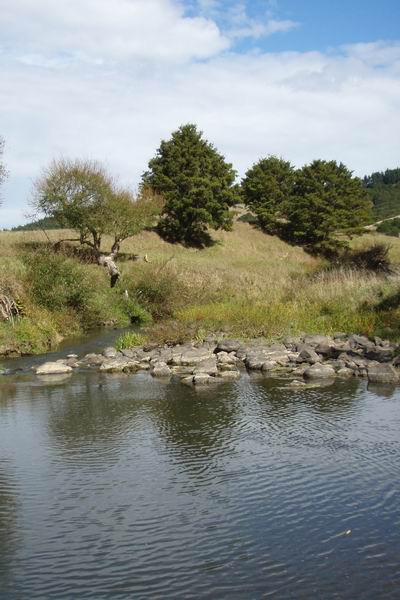Executive summary
River habitat assessments are undertaken biennially by the Northland Regional Council (the Council) at a selection of sites on rivers around the region. Sites assessed are all in the Regional River Water Quality Monitoring Network (RWQMN).
Habitat assessments follow the protocol detailed in Pfankuch D. J. (1975), ‘Stream Reach Inventory and Channel Stability Evaluation'. This allows for the quality of the riparian environment to be assessed (stream health), along with an estimate of the amount (quantity) of different habitats present and the stability of the environment.
Other data collected by the Council is used to aid interpretation of results from the habitat assessments. This includes water quality data collected through the RWQMN and results from the Council's macroinvertebrate monitoring programme.
This report presents the results from habitat assessments undertaken in 2008 and 2010. A total of 25 sites were assessed in 2008 and 35 sites in 2010. Also included in this report is some provisional trend analysis of results from the last four rounds of sampling (2005, 2007, 2008 and 2010).
In 2008, no sites recorded excellent stability, eight sites recorded good stability, 15 sites recorded fair stability and two sites recorded poor stability. The two most stable sites were the Waipoua River and Waipapa River at Forest Ranger.
Also in 2008, no sites recorded poor habitat, 14 sites recorded marginal habitat, nine sites recorded sub-optimal habitat and two sites recorded optimal habitat. The two best sites were the Waipoua River and Waipapa River at Forest Ranger.
In 2010, no sites recorded excellent stability, 13 sites recorded good stability, 14 sites recorded fair stability and two sites recorded poor stability. The two most stable sites were Kaihu River and Waipoua River.
Also in 2010, two sites recorded poor habitat quality, 13 recorded marginal habitat quality, 18 recorded sub-optimal habitat quality and two recorded optimal habitat quality. The two best sites were Mangahahuru at Main Road and Waipapa River at Forest Ranger.
Trends observed over four samples (taken in 2005, 2007, 2008 and 2010) indicate that habitat quality has improved at nine sites, declined at ten sites and remained stable at three sites. In comparison, channel stability has increased at 13 sites, declined at three sites and remained stable at four sites.
Investigation needs to be done at sites that have declining habitat quality and those that appear to have declining populations of macroinvertebrate species. Some investigation also needs to be done at sites that show a decline in stability, to identify if this decline is as a result of land-use or human activity, or natural events. Information collected through investigations would allow for accurate interpretation of results and could help focus land-management resources in areas that are most at need.

